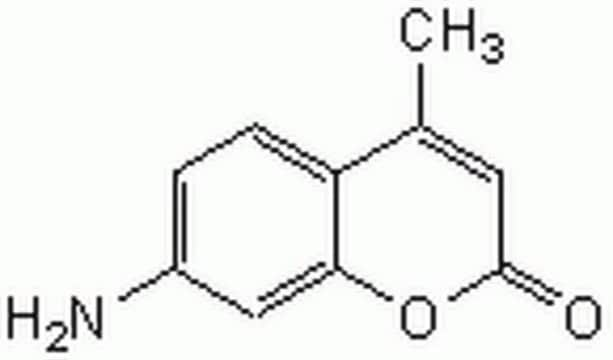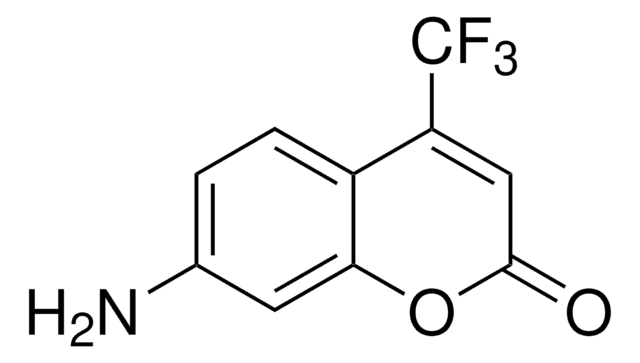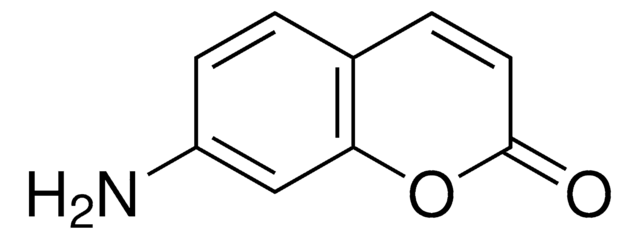08445
7-Amino-4-methyl-3-coumarinylacetic acid
BioReagent, suitable for fluorescence, ~90% (HPLC)
Sinónimos:
2H-1-Benzopyran-3-acetic acid, AMCA-H, Aminomethyl coumarin acetic acid
About This Item
Productos recomendados
Línea del producto
BioReagent
Nivel de calidad
Ensayo
~90% (HPLC)
Formulario
powder
solubilidad
DMF: soluble
DMSO: soluble
aqueous base: soluble
fluorescencia
λex 350 nm; λem 433 nm in methanol
idoneidad
suitable for fluorescence
cadena SMILES
CC1=C(CC(O)=O)C(=O)Oc2cc(N)ccc12
CC1=C(CC(O)=O)C(=O)Oc2cc(N)ccc12
InChI
1S/C12H11NO4/c1-6-8-3-2-7(13)4-10(8)17-12(16)9(6)5-11(14)15/h2-4H,5,13H2,1H3,(H,14,15)
Clave InChI
QEQDLKUMPUDNPG-UHFFFAOYSA-N
Aplicación
Envase
Otras notas
Palabra de señalización
Warning
Frases de peligro
Consejos de prudencia
Clasificaciones de peligro
Eye Irrit. 2 - Skin Irrit. 2 - STOT SE 3
Órganos de actuación
Respiratory system
Código de clase de almacenamiento
11 - Combustible Solids
Clase de riesgo para el agua (WGK)
WGK 3
Punto de inflamabilidad (°F)
Not applicable
Punto de inflamabilidad (°C)
Not applicable
Equipo de protección personal
dust mask type N95 (US), Eyeshields, Gloves
Elija entre una de las versiones más recientes:
¿Ya tiene este producto?
Encuentre la documentación para los productos que ha comprado recientemente en la Biblioteca de documentos.
Los clientes también vieron
Artículos
Nitric oxide (NO) as a signal transporter in neurons, endothelial cells and in the immune system.
Nuestro equipo de científicos tiene experiencia en todas las áreas de investigación: Ciencias de la vida, Ciencia de los materiales, Síntesis química, Cromatografía, Analítica y muchas otras.
Póngase en contacto con el Servicio técnico











